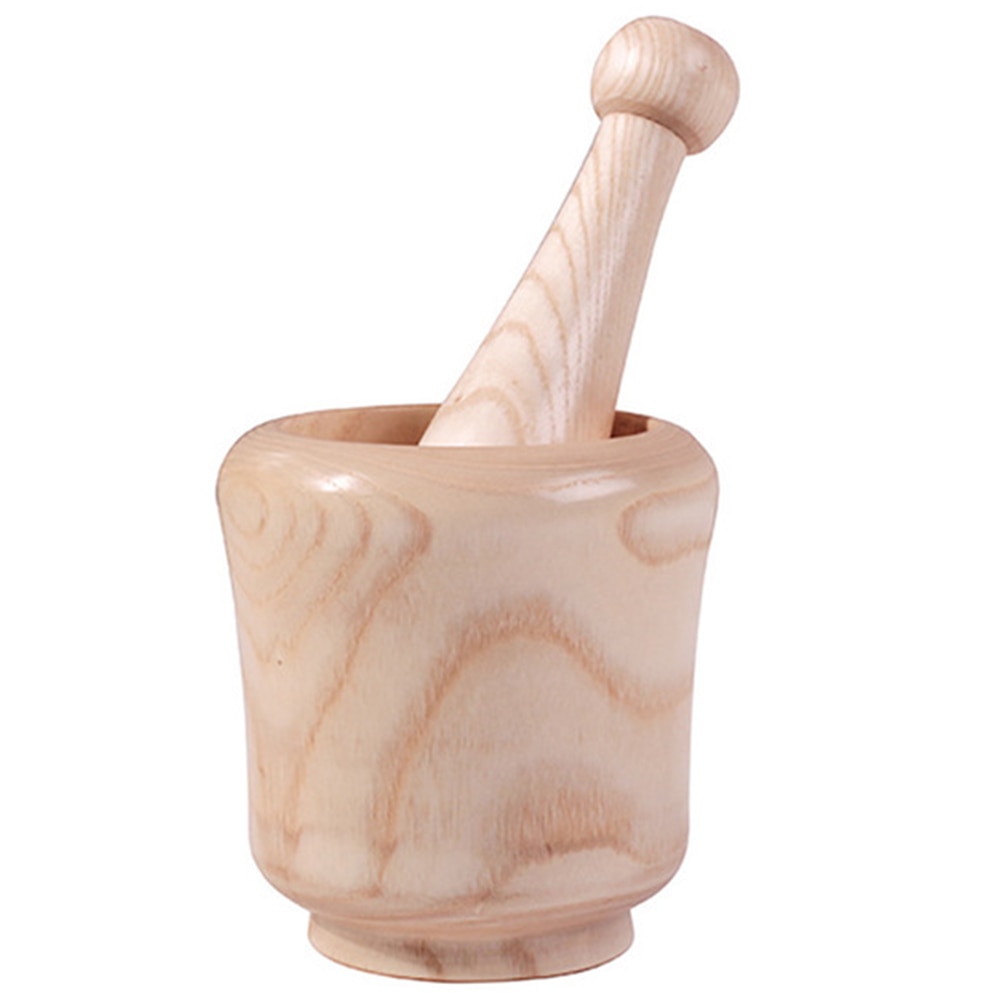
The mortar and pestle, one of the oldest culinary tools in the world, has transcended time and remains an essential kitchen instrument. From crushing spices and grinding herbs to making pesto and grinding grains, these are versatile, reliable, and capable of enhancing the flavors of your culinary creations. Choosing the right one, however, is more than a simple decision; it’s a matter of craftsmanship, material, and practicality. In this comprehensive guide, we will delve into the factors to consider when selecting the perfect sets, helping you make an informed choice that elevates your culinary experiences and fits your unique needs.
Understanding Mortar and Pestle: Types and Versatility
These sets come in various types, each tailored to specific purposes and preferences. Let’s explore some of the most common types and their versatility:
- Stone Mortar and Pestle: Traditional and durable, stone sets are often made from materials like granite, marble, and basalt. They’re excellent for grinding and crushing a wide range of ingredients, from spices and herbs to grains and nuts. Stone provide a rustic and authentic feel to your kitchen.
- Wooden Mortar and Pestle: Wooden sets, often made from hardwoods like beech or olive wood, are more delicate than stone counterparts. They are suitable for grinding softer ingredients and are often chosen for their aesthetic appeal. Wooden mortar and pestles are ideal for preparing certain herbs, spices, and condiments.
- Ceramic or Porcelain Mortar and Pestle: Ceramic and porcelain sets are versatile and easy to clean. They are excellent for grinding herbs, spices, and seeds. The smooth interior of ceramic or porcelain mortars prevents ingredients from sticking, making them easy to work with.
- Molcajete and Tejolote: These Mexican stone tools, often made from volcanic rock like basalt, are renowned for making authentic guacamole and salsa. The rough surface of the molcajete is ideal for grinding and crushing, and it imparts a unique flavor to the food.
- Mortar with Pour Spout: Some mortar and pestle sets come with a pour spout, making it easy to transfer ingredients without mess. These are practical for grinding and mixing liquids, like making salad dressings or marinades.
- Electric Mortar and Pestle: Electric models are suitable for those who want a quick and efficient grinding process. They are often used in professional kitchens and laboratories.
Choosing the Right Material
The material of these greatly impacts their durability and performance. Here are the most common materials and their characteristics:
- Granite: Granite is a popular choice for its durability and strength. It’s excellent for grinding hard and dry ingredients, such as spices, seeds, and nuts. Granite are resistant to chipping and staining.
- Marble: Marble mortar and pestles are elegant and often used for delicate tasks like crushing herbs and spices. However, they are more susceptible to staining and chipping than granite.
- Basalt: Basalt is a volcanic rock known for its abrasive surface, making it ideal for grinding and crushing. It’s a common material for molcajete and tejolote sets, perfect for Mexican dishes.
- Wood: Wooden mortar and pestle sets are less abrasive, making them suitable for gentle grinding. They are often chosen for their aesthetics and their ability to impart a unique flavor to food.
- Ceramic or Porcelain: Ceramic and porcelain sets are easy to clean and suitable for grinding herbs and spices. Their smooth surfaces prevent ingredients from sticking.
- Soapstone: Soapstone is a softer stone known for its attractive veining. It’s often chosen for its elegance and is suitable for grinding spices and herbs.
- Stainless Steel: Some modern mortar and pestle sets are made from stainless steel, which is durable, easy to clean, and resistant to staining. Stainless steel is ideal for grinding spices and herbs.
Functionality and Size
Functionality and size are crucial factors in choosing the right sets. Consider the following aspects:
- Size: The size of your mortar and pestle should match your culinary needs. Smaller sets are ideal for grinding herbs and spices, while larger sets are better for crushing grains, seeds, and more substantial ingredients.
- Depth: The depth of the mortar bowl is important. A deeper bowl provides more space for ingredients and reduces the risk of spillage.
- Pestle Shape: The shape of the pestle can vary. A cylindrical or slightly conical pestle is versatile and can be used for grinding and crushing. Some pestles have a rounded or pointed tip for more specific tasks.
- Weight: Consider the weight of the mortar and pestle. A heavier set can be more stable for heavy-duty grinding tasks, while a lighter set may be more comfortable for smaller jobs.
- Pestle Length: The length of the pestle should be long enough for you to grip comfortably and apply pressure when grinding.
Maintenance and Care
The maintenance and care of it depend on the material. Here are some general guidelines:
- Stone, Granite, Marble, and Basalt: Rinse with warm water and mild detergent, and scrub with a brush. Avoid using acidic substances that can damage the surface. Regularly oil wooden mortar and pestles to prevent cracking.
- Ceramic or Porcelain: Wash with warm water and mild detergent. Stains can be removed with a baking soda and water paste. Avoid harsh abrasives that can scratch the surface.
- Wood: Clean with warm, soapy water, but don’t soak. Dry thoroughly after each use to prevent mold. Occasionally oil with mineral oil to maintain the wood’s integrity.
- Stainless Steel: Stainless steel are generally dishwasher safe and easy to clean.
- Electric Models: Follow the manufacturer’s instructions for cleaning and maintenance.
Purpose and Culinary Use
Consider your primary purpose when choosing a mortar and pestle:
- Grinding Spices: If you mainly use it for grinding spices, a hard material like granite or basalt is ideal due to its abrasiveness.
- Crushing Herbs and Leaves: For crushing herbs and leaves, ceramic, porcelain, or wooden are good choices as they are less abrasive.
- Mixing Pastes: For making pastes like guacamole or pesto, a molcajete and tejolote or a wooden mortar and pestle can provide an authentic touch.
- Grinding Seeds and Nuts: If you need to grind seeds and nuts, a durable material like granite is essential to withstand the pressure.
- General Culinary Tasks: For all-around kitchen tasks, a medium-sized set made of granite or stainless steel can serve you well.
Conclusion
Selecting the perfect mortar and pestle is a matter of craftsmanship, material, and practicality. Understanding the different types, materials, and sizes, considering the culinary tasks you intend to perform, and assessing maintenance and care are all crucial aspects of the decision-making process.


